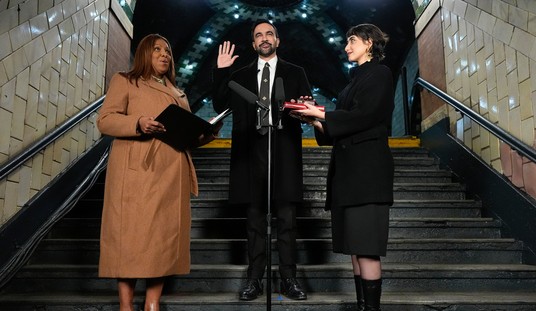On the first day of the congressional hearings on Toyota, one of the few witnesses called was Dave Gilbert, a professor of automotive technology at Southern Illinois University. Gilbert claims that he has been able to get Toyotas to accelerate in an uncontrolled manner, that he can reproduce the error, and that it doesn’t generate any fault codes in the car’s diagnostic system.
In advance of his testimony, ABC News ran a story showing Gilbert reproducing his tests, accompanied by video of Toyotas accelerating out of control.
People took notice. Reproducible results from a professor sounds a lot more like solid evidence than loose floor mats and shims in acceleration pedals.
Gilbert introduced electrical faults into the cars’ control systems that he said duplicated real world corrosion, moisture, and manufacturing defects. The shorts caused the Toyotas to accelerate without triggering any error codes in the main engine control unit — which would have put the car into fail-safe limp home mode. The fact that no error codes were generated would also explain why Toyota has had a hard time putting its finger on the problem.
It sounds very scientific and reliable — a professor with repeatable results in four different Toyota models, results he claims he cannot reproduce in General Motors products.
“This is a dangerous condition, it is not fail-safe,” said Gilbert on ABC’s World News Tonight.
Still, there was something in the back of my mind that made me a little bit skeptical. In 1992, Dateline NBC got caught rigging GM pickup trucks with model rocket engines when they couldn’t get the supposedly defective gas tanks to explode and provide them with the dramatic fiery footage they needed.
Who is Dave Gilbert, and how did he come to be an “expert” witness before Congress? All due respect to Gilbert — after all, he’s got a PhD — but he’s not an automotive engineer. I have all the regard in the world for capable mechanics, troubleshooters, and technicians, but Southern Illinois University at Carbondale’s automotive technology program is a glorified auto shop program that I’d expect at a vocational high school or a community college. Frankly, I’m a bit shocked that a four-year college offers a BS in automotive technology.
My skepticism increased when I found out who was hyping Prof. Gilbert’s findings: Sean Kane, whom ABC described as a “safety advocate” from Safety Research & Strategies. Kane, who claims to have been the first to spot the trend of owner complaints about unintended acceleration in Toyotas, testified with Gilbert.
“This is clearly an electronic problem,” Kane told ABC News before his testimony.
Who is Sean Kane?
Well, trial lawyers engaged in litigation with Toyota fund his “research.” That fact came out in the hearings, as Kane sparred with Rep. Steve Buyer (R-IN), who represents a district with a Toyota facility. Kane admitted that he’d received money from five attorneys with cases pending against Toyota.
It also came out that Kane funded Gilbert’s research.
Kane used to work for the Center for Auto Safety — Ralph Nader’s first hobby horse — which gave us such fervent automotive enthusiasts as Clarence Ditlow and Joan Claybrook, both of whom will also testified in the hearings. Ditlow was once successfully sued for slander by a GM lawyer that Ditlow accused of destroying documents. It came out in the case that Ditlow, himself an attorney, had a back-scratching deal with plaintiffs’ attorneys suing GM and he was fined by the judge for gross misconduct.
Ditlow was also involved in the Dateline NBC imbroglio. It’s not surprising that he would glom on to the Toyota problem.
The Nader/Ditlow/Claybrook triumvirate has had an on-again, off-again relationship with Toyota. When Japanese cars first came into the U.S., the “safety advocates” hated them because they were indeed not very safe. (See the Subaru 360.) After the oil embargoes of the 1970s, mileage became their religion and a convenient whip to use on Detroit, so they embraced Toyota for making small cars.
Then they became environmentalists. After the Prius was introduced, Toyota was again a useful cudgel to swing at Detroit. Sure, there were consumer issues like frame rust on trucks and sludge in engines, but for the most part the Naderite crowd remained enamored of Toyota. Toyota, though, is no longer an underdog, and hated Detroit is on death’s door.
Why pick on Detroit when Toyota has such deep pockets?
In his prepared testimony, Gilbert claims to have started his research by seeing if he could create faults in his Tundra that would not return error codes. He makes no mention of his work being funded by Kane. Ultimately, he focused on the Accelerator Pedal Position sensor:
After completing preliminary tests for Accelerator Pedal Position (APP) sensor signal voltages for the Toyota Electronic Throttle System I examined, it was determined that Electronic Control Module (ECM) malfunction detection strategies were not sufficient to identify all types of fundamental APP sensor and/or circuit malfunctions. Some types of Electronic Throttle Control (ECT) circuit malfunctions were detectable by the ECM, and some were not. Most importantly, the Toyota detection strategies were unable to identify malfunctions of the APP sensor signal inputs to the ECM. APP sensor signal circuits must be undeniably correct to electrically convey the appropriate driver commands to the ECM.
With the two APP sensor signals shorted together through a varying range of resistances, all four Toyota vehicles tested thus far reacted similarly and were unable to detect the purposely induced abnormality. The types of signal faults introduced into the APP circuit should have triggered the vehicles’ ECM to illuminate a warning lamp within seconds. The ECM should have then set a Diagnostic Trouble Code (DTC), entered the vehicle fail-safe mode, and reduced engine speed and/or power. When the two APP signal circuits are shorted together, the redundancy of the APP circuit design is effectively nullified and lost. In other words, neither of the shorted APP signal circuits can be verified by the ECM as either; correct or incorrect.
The condition then exists for a serious concern for driver safety. In the tested Toyota ETC vehicles, incorrect or corrupted APP sensor signal inputs could potentially result in unwanted engine speeds. Additional research should be done to determine if other vehicle manufacturers may have similar inconsistencies in ETC circuit fault detection.
Using shorted APP signal circuit fault conditions purposely installed on the test vehicles, and with known resistance values that would not set a DTC, vehicle operational behaviors were also noted. It was observed that all test vehicles could be operated without the ECM detecting the induced malfunction. Depending on the resistance value of the APP signal circuit fault, a vehicle may or may not experience noticeable changes in accelerator pedal operational behavior. Observed accelerator pedal operational characteristics included: normal response, sluggish response, and travel with inconsistent engine speeds.
It is conceivable that a driver of an ETC vehicle may not notice that an APP sensor and/or circuit malfunction currently exists. Without the aid of an illuminated MIL, a driver could be unaware of electrical problems within the ETC system. In addition, the shorted APP signal circuits were connected momentarily to the sensor’s five volt supply circuit with the vehicle in drive. In all test vehicles, the ECM did not set a DTC and the engine speed increased rapidly to full throttle. This result shows that unusual or sudden unintended acceleration of the vehicle was possible in the ETC test vehicles.
It should be noted that in all test vehicle cases, the electronic throttle valve instantaneously moved to wideopen position when the fault was introduced. More research should be done to determine the extent of Toyota ETC vehicles that could be affected by this condition.
Everything looks transparent, but one thing bothers me — he never explains exactly how the faults he introduced actually replicate real world situations. Where are the pedals with such electrical faults? In the actual vehicle tests, he describes introducing short circuits of various resistances between the two APP sensors. I believe that the way it is designed to work is that two sensors track inverse values, and if the two values do not correspond correctly it should trigger an error code and close the throttle. Gilbert shows how different resistance shorts can create various ETC issues without any error codes.
What Gilbert doesn’t explain is how such short circuits actually occur in real life — like, for example, he put a pedal unit in a salt spray cabinet and then measured for electrical faults. Then, to trigger a wide open throttle condition, also without generating an error code, he connected the sensors’ five-volt power supply circuit to the already shorted APP sensors. He never shows that multiple electrical faults have ever actually happened, only that if he connects this wire with that wire, which has already been hotwired to another circuit, he can get the car to runaway.
What Gilbert has discovered could be useful information, at least so that Toyota and other automakers could make sure the cars are truly fail-safe, but it may have nothing to do with the problems some drivers are having with their Toyota products.
But for unintended acceleration to happen like this in the real world, there would have to be two different electrical faults at the same time. Call me a skeptic but I’d at least like some kind of explanation, if not a demonstration, just how corrosion, moisture or a manufacturing flaw could come to cause those exact combinations of short circuits. Just how common is it for the power rail on a sensor to short to the other parts of the sensor circuit?
In covering this part of the story when it broke, The Truth About Cars used the phrase “ghost in the machine.” When someone comes forward and says they can summon ghosts, we should start looking for switches under the table. In this situation there was no legerdemain — all the switches were right there in the open.








Join the conversation as a VIP Member